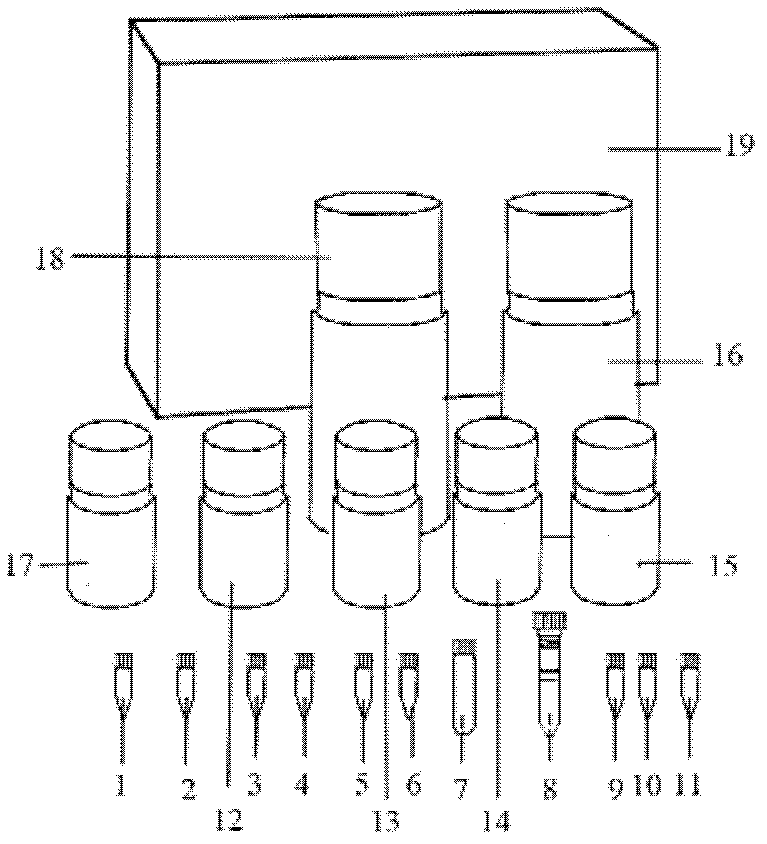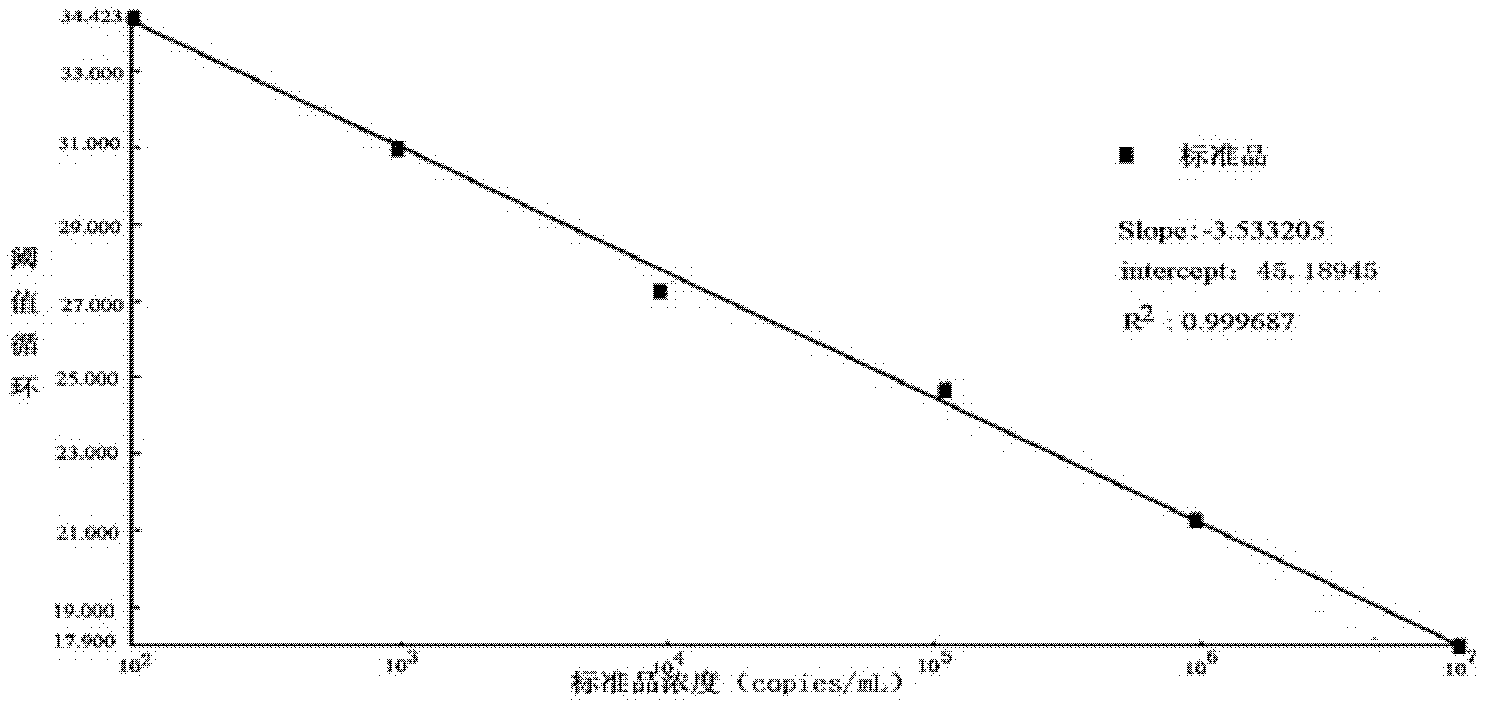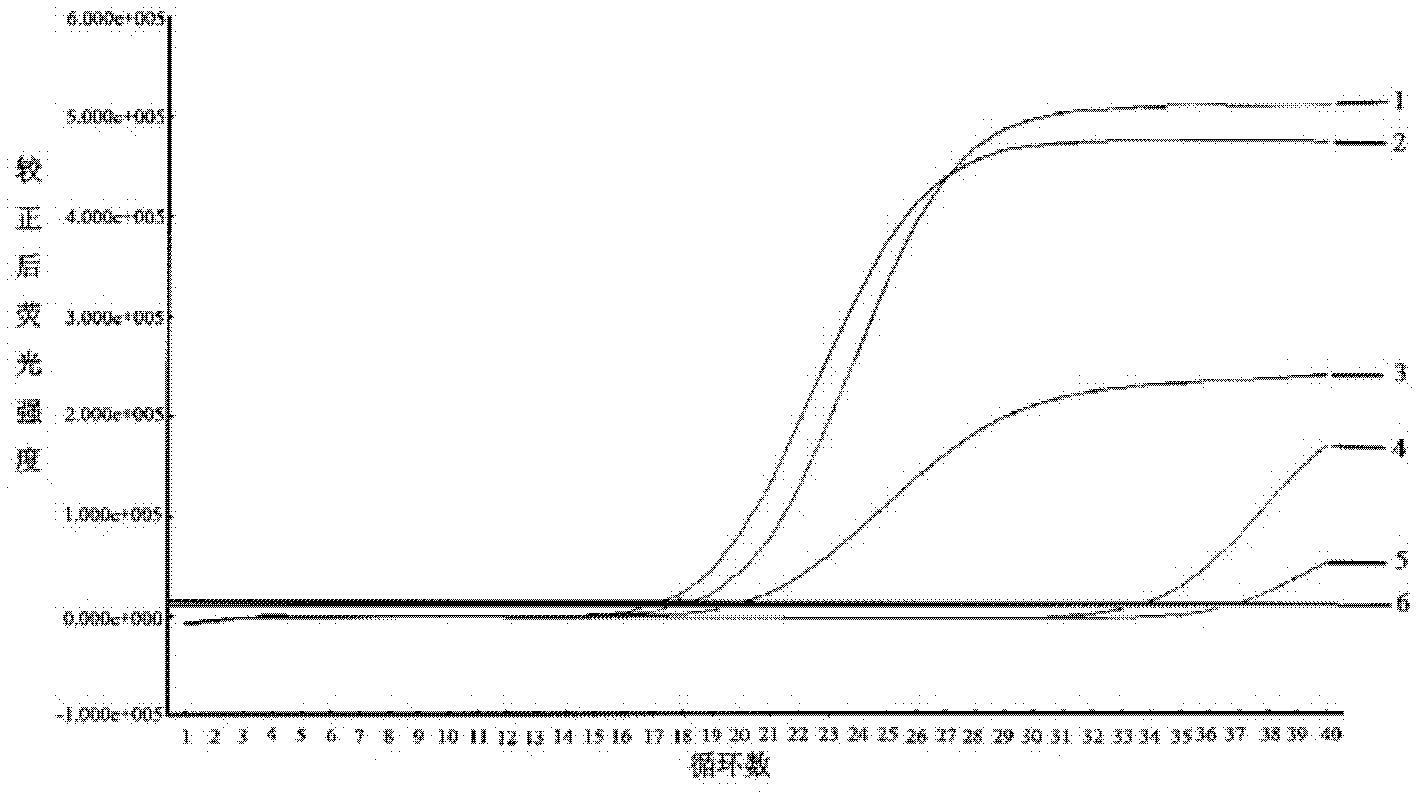Treponema pallidum real-time fluorescence quantitative PCR (Polymerase Chain Reaction) multitarget detection kit and preparation thereof
A real-time fluorescence quantitative, Treponema pallidum technology, applied in the field of kits, can solve the problems of low accuracy, insufficient sensitivity and specificity, and achieve the effect of avoiding missed detection, improving accuracy and sensitivity, and improving sensitivity
- Summary
- Abstract
- Description
- Claims
- Application Information
AI Technical Summary
Problems solved by technology
Method used
Image
Examples
preparation example Construction
[0047] The preparation method of the real-time fluorescent quantitative PCR multi-target detection kit of Treponema pallidum comprises the following steps:
[0048] 1) Target gene screening
[0049] Screening of high-specificity and high-sensitivity target genes of Treponema pallidum from GENBANK. Five highly specific syphilis genes including polA gene, TPN47 gene, tmpA gene, TpF-1 gene and bmp gene. The design of primers and fluorescent probes was assisted by primer premier 5.0, Oligo 6.0, TM Utility vl.3, Clustal X and other design software, and then homology comparison was performed by BLAST to ensure their specificity. The synthesized primers and probes were dissolved with TE (10mM Tri-HCl, pH 5.0, 0.1mM TA), and the concentrations were determined using an ND-1000UV-VIS wavelength ultraviolet / visible light scanning spectrophotometer (Nanedrop, USA). The concentration was adjusted to 50 μM and stored at -20°C.
[0050] 2) Construction of multi-target gene standard plasmi...
Embodiment 1
[0084] 1) Target gene screening
[0085] References, Screening Treponema pallidum High Specificity and High Sensitivity Target Genes from GENBANK. Five highly specific syphilis genes including polA gene, TPN47 gene, tmpA gene, TpF-1 gene and bmp gene. The design of primers and fluorescent probes was assisted by primer premier 5.0, Oligo 6.0, TM Utility vl.3, Clustal X and other design software, and then homology comparison was performed by BLAST to ensure their specificity. The synthesized primers and probes were dissolved with TE (10mMTri-HCl, pH5.0, 0.1mM TA), and the concentrations were determined using an ND-1000UV-VIS wavelength ultraviolet / visible light scanning spectrophotometer (Nanedrop, U.S.), and the final concentration Adjust to 50μM and store at -20°C.
[0086] 2) Construction of multi-target gene standard plasmid
[0087] The DNA of Treponema pallidum Nichols strain was extracted by the silica gel membrane-spin column method as a template, and the primers of t...
Embodiment 2
[0109]Similar to Example 1, the difference is that the samples to be tested are tissue samples of chancre and skin lesions, and the samples are washed with an appropriate amount of sterilized physiological saline to wash the blood stained with the tissue for inspection; take about 50 mg of tissue, add 1 mL of sterilized physiological saline for use Grind it into tissue homogenate with a homogenizer, transfer to a 1.5mL centrifuge tube, centrifuge at 12,000rpm for 5min; remove the supernatant, add 1mL of sterilized saline to the precipitate and mix well, and centrifuge at 12,000rpm for 5min; remove the supernatant, extract DNA from the precipitate and PCR amplification is the same as in Example 1.
PUM
 Login to View More
Login to View More Abstract
Description
Claims
Application Information
 Login to View More
Login to View More - R&D
- Intellectual Property
- Life Sciences
- Materials
- Tech Scout
- Unparalleled Data Quality
- Higher Quality Content
- 60% Fewer Hallucinations
Browse by: Latest US Patents, China's latest patents, Technical Efficacy Thesaurus, Application Domain, Technology Topic, Popular Technical Reports.
© 2025 PatSnap. All rights reserved.Legal|Privacy policy|Modern Slavery Act Transparency Statement|Sitemap|About US| Contact US: help@patsnap.com



